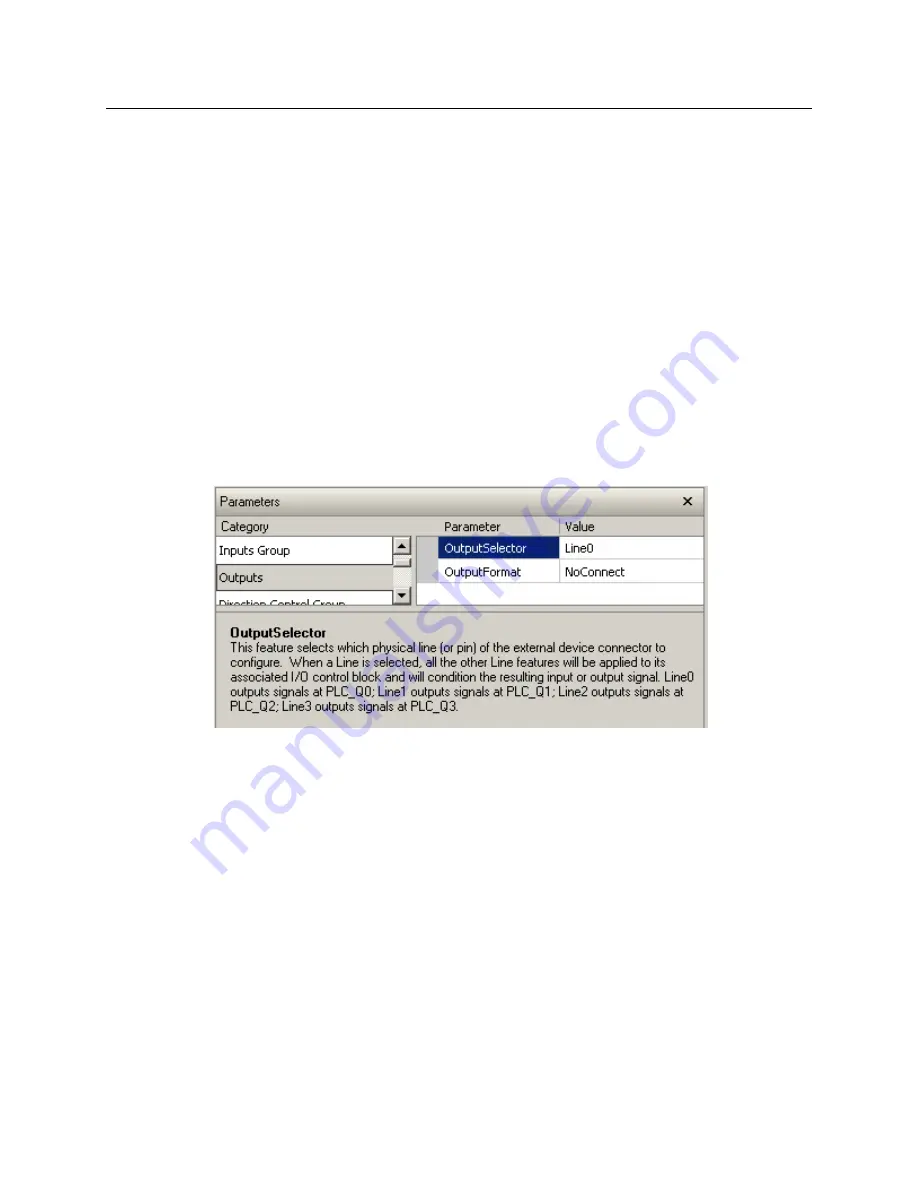
68
•
Appendix B: GPIO Control
Outputs
Outputs are used to control external devices and monitor internal signals.
Step 1
Select the output line.
Step 2
Set the Signal Routing Block parameter. Refer to section “PLC Input Signal Routing Block”
for more detail about PLC settings.
Important Note:
Signals PLC_10 to PLC_15 should not be changed unless you are
very
experienced with triggers and PLC settings.
Step 3
Set the signal output: Q0 to Q3.
Use the lookup table to output signals to one of 4 GPIO outputs.
Figure 53: Output Selector
The signal to output can be selected from the Signal Routing Block parameters. For
example, the following figures will output line 0. Please note that the frame valid (PLC_A4)
is always high since Spyder3 is a line scan camera.






























